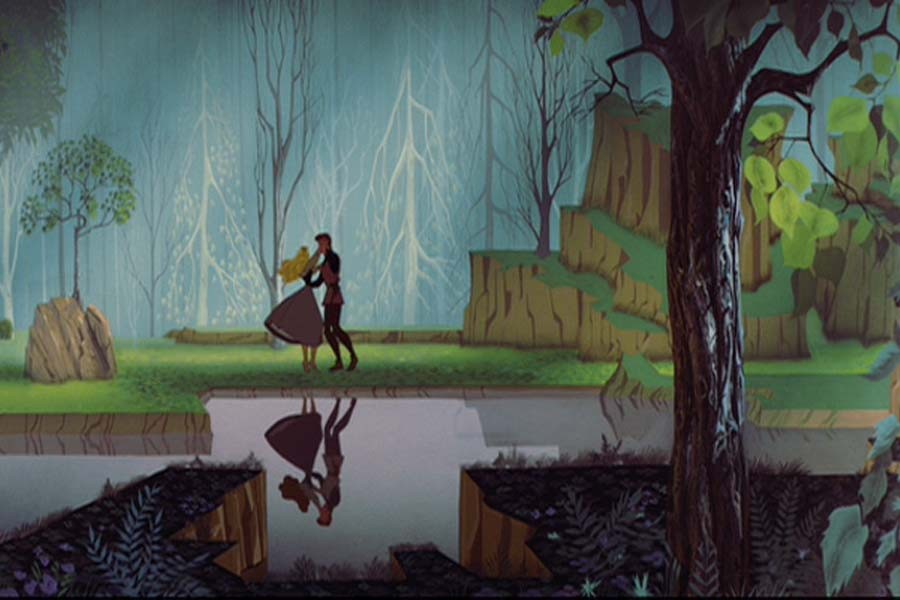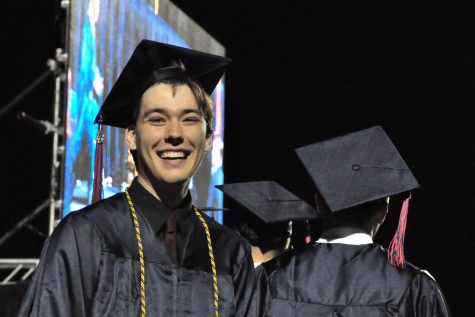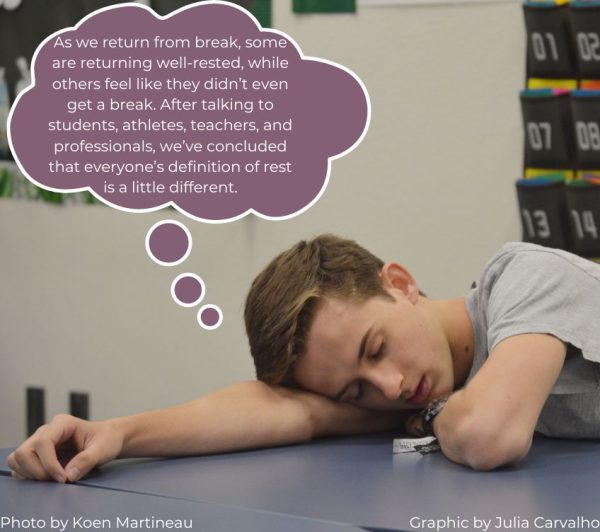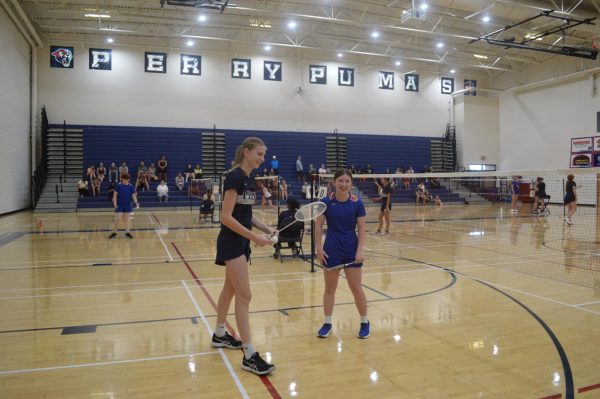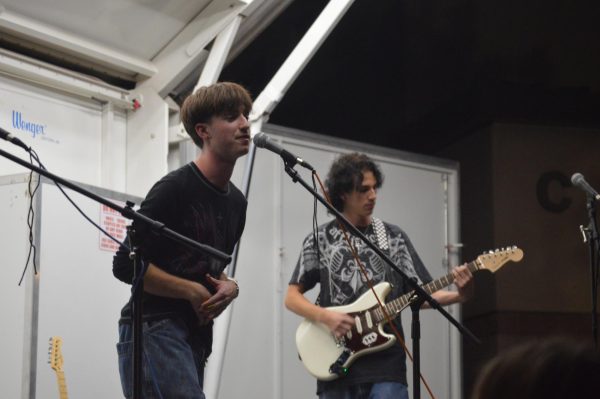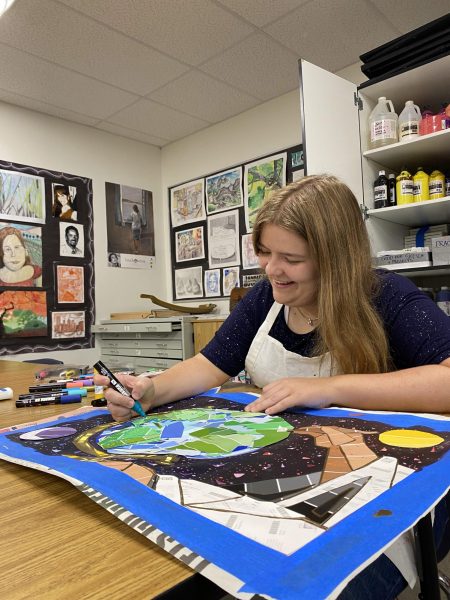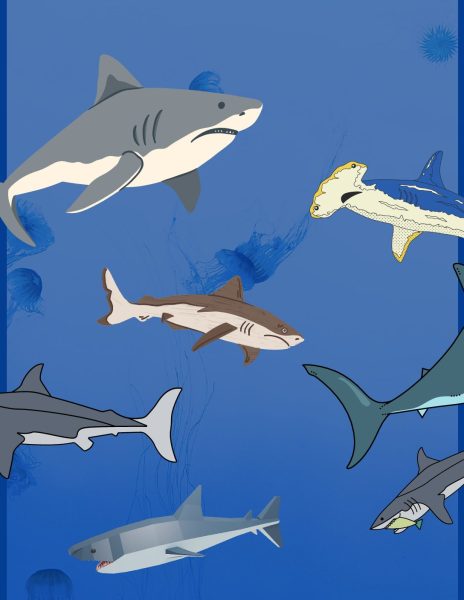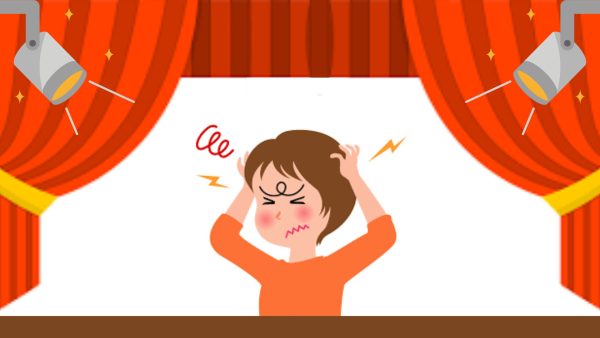The Disney Year: Third time is the charm for Disney’s fairy tales
Aurora and Philip dance through an illuminated-manuscript style forest as “Once Upon a Dream” plays (Disney).
August 19, 2015
The output of Walt Disney Animation Studios–currently totaling 54 full-length films–has been cherished by audiences young and old for almost 80 years. In this weekly online feature, arts and entertainment editor Nathan Tucker will review and rank each of them.
The crucial problem with Disney’s classic princess films is that their heroines are complete non-entities. Sleeping Beauty ingeniously sidesteps this issue by giving its heroine as little screentime as possible. She simply sings a song, dances, cries over a boy, then falls asleep. With its obligatory lead largely out of the way, Sleeping Beauty can focus on being a good film rather than a good princess film.
That quality begins with the animation and design of the film, which looks like a medieval tapestry come to life. If the dominant artistic quality of Alice was color, in Sleeping Beauty it is texture: the freshly painted gloss of the trees, the cracked stones of Maleficent’s castle, and the flat style of the opening sequence’s crowds all contribute to an almost tactile sensation. While Lady and the Tramp was the first film to be drawn in widescreen, Sleeping Beauty beats it by taking advantage of the format’s overwhelming capabilities.
The stunning visuals are aided and abetted in stealing the show from the leaden leads by the supporting cast. The grandmother-mother-daughter triad of fairies get up to the kind of hijinks that would have vastly improved Snow White’s dwarfs and are, for all intents and purposes, the picture’s true protagonists. Maleficent is the most deliciously evil villain Disney has yet concocted, a rewrite of Snow White’s Queen that includes actual personality. Add the brief comic pieces between the two kings and you have enough vivid characters to fill the hole that Aurora and Philip leave at the film’s center.
That may be too harsh because Philip and Aurora, for what they are, could have been much worse. They sing a set of sugary lyrics over a nice strain from Tchaikovsky, look perfectly at home in an animated paradise, and Philip even gets in a few jokes. Compared to Snow White and Cinderella, they are a complete revolution.
But that revolution suddenly stopped turning. Sleeping Beauty was the studio’s final film done in the luxurious pen-and-ink style and their last fairy tale for thirty years. Future projects would use the cheaper Xerox process and more contemporary settings and stories, clearly setting Disney’s last film of the Fifties at the end of an era.
The List:
- Bambi
- Sleeping Beauty
- Lady and the Tramp
- Alice in Wonderland
- Fantasia
- Pinocchio
- Peter Pan
- The Adventures of Ichabod and Mr. Toad
- Cinderella
- Dumbo
- Melody Time
- Snow White and the Seven Dwarfs
- Fun and Fancy Free
- Saludos Amigos
- Make Mine Music
- The Three Caballeros

